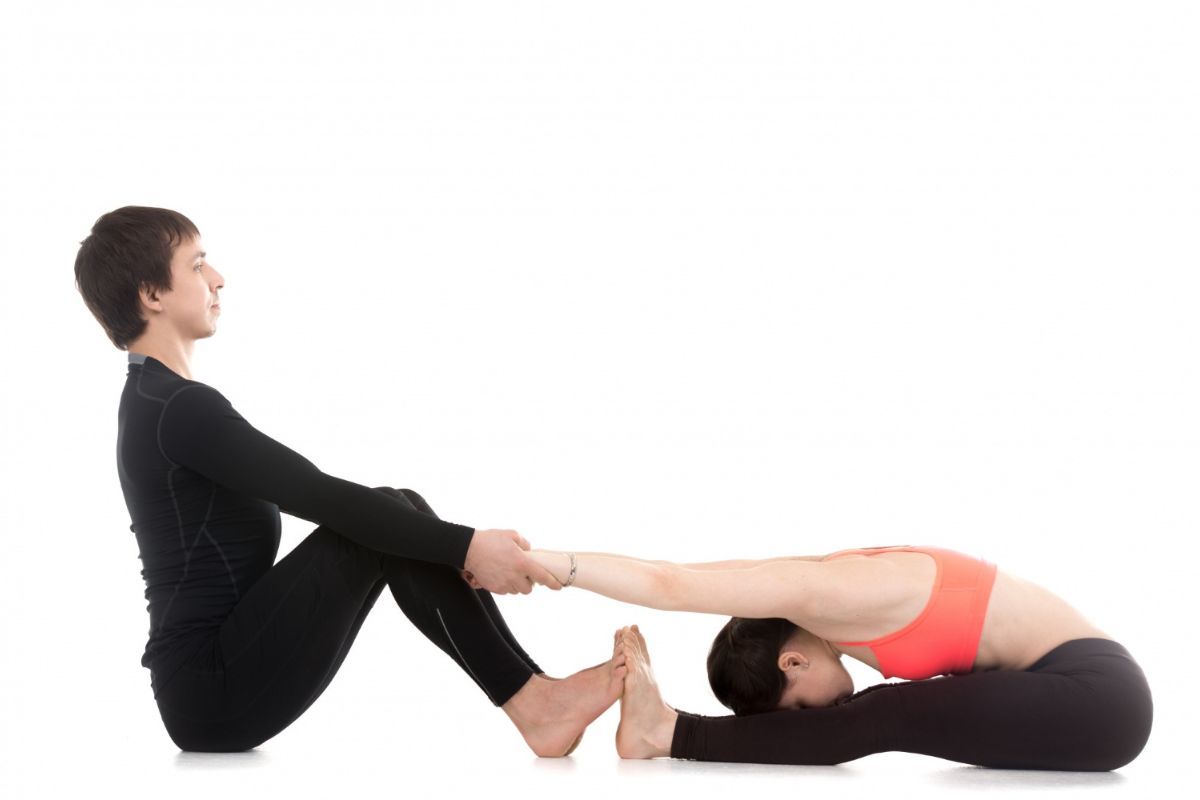10 of the best yoga poses for 2 persons
Explore a few simple yoga poses for 2 suitable for beginners, and don’t forget to stretch beforehand while concentrating on deep, mindful breathing!
Looking to double your yoga fun, challenge your balance, and seriously level-up your connection with someone special? Then partner yoga might just be your new obsession.
Sure, yoga can be a solo, zen experience—but why keep all that good energy to yourself?
Teaming up with a friend, partner, or that random person from your yoga class (hey, no judgment) can amplify the benefits in a totally new way. You’ll lean on each other—literally—and learn to communicate with more than just words.
Balancing in funky new positions? Check.
Stretching muscles you didn’t know existed? Double check.
And if you think it’s all about being a flexible acrobat, spoiler alert: it’s also about bonding, building trust, and just plain having a blast. After all, two yogis are better than one!
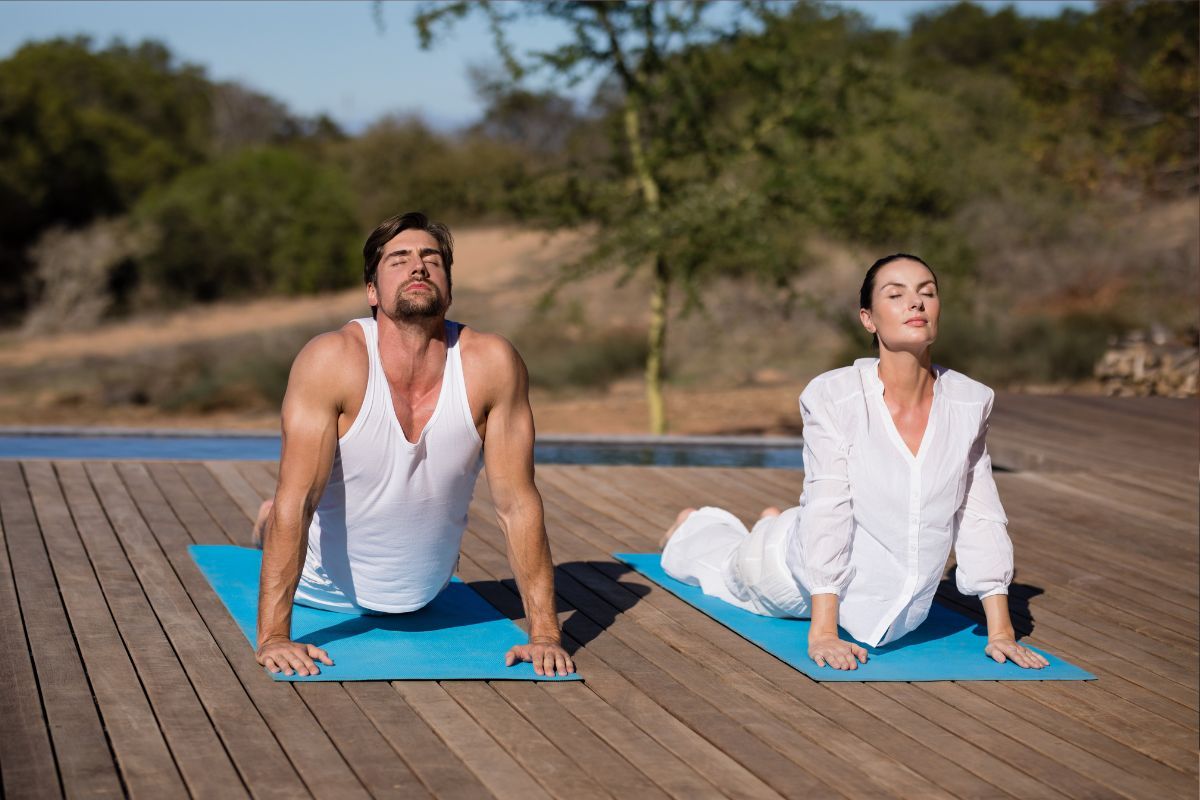
Source: wavebreakmedia micro on Freepik
The benefits of partner yoga
So, why should you grab a friend, a significant other, or even your super-flexible cousin and start doing yoga together? Turns out, partner yoga isn’t just about looking cool in tandem poses for Instagram (though, let’s be honest, that’s a nice bonus). It’s packed with real benefits—physically, mentally, and emotionally. Here’s why you should give it a shot:
1. Physical benefits 💪🧘♀️
Let’s start with the obvious—your body will thank you. Partner yoga pushes your flexibility, balance, and strength in ways solo yoga just can’t.
- Deeper stretches: With a partner’s help, you can gently push your body further into poses—without overdoing it.
- Better balance: Balancing is way easier when you’ve got a partner to stabilize you (or at least someone to laugh with when you wobble).
- Stronger core & muscles: Supporting each other means engaging your core, legs, and arms even more. Basically, it’s yoga and strength training rolled into one.
2. Mental & emotional benefits 🧠❤️
Partner yoga isn’t just a workout—it’s a team effort. It strengthens your mind just as much as your body.
- Builds trust: You literally have to lean on each other (sometimes a lot), which makes for a pretty solid trust exercise.
- Boosts communication: You’ll need to talk, listen, and adjust together. No mind-reading skills required—just a little patience and teamwork.
- Reduces stress: Yoga alone is a great stress reliever, but add in a partner and suddenly it’s also a social activity. Double the zen, double the fun.
3. Relationship & social benefits 🤝💬
Whether you’re practicing with your bestie, your partner, or even a yoga buddy from class, partner yoga creates a stronger bond.
- Enhances connection: It’s a non-verbal way of saying, “I got you.” Plus, syncing movements and breath fosters a unique connection.
- Encourages playfulness: There’s something inherently fun about trying new poses together—especially the ones that require a little trial and (hilarious) error.
- Great for couples & friendships: Studies show shared activities strengthen relationships. Why not make yoga one of them?
Getting started with partner yoga
When it comes to Pilates, the right top can make all the difference in your comfort and performance. You need something that stays in place, supports you, and lets you move freely—all while looking great. Here’s what you should look for in the perfect Pilates top:
So, you’re ready to dive into the world of partner yoga—great choice! Before you start twisting into double pretzels or attempting Instagram-worthy acro moves, let’s go over a few essentials to make sure you and your yoga buddy have the best (and safest) experience.
1. Preparation & safety first 🧘♀️✅
Before you jump in, let’s make sure you set yourself up for success.
- Find a spacious, non-slip surface – You don’t want to be knocking over furniture or sliding all over the place. A yoga mat (or two) is ideal!
- Wear comfy, stretch-friendly clothing – No one wants to be adjusting their leggings mid-pose.
- Warm up first – Loosen up those muscles with some basic stretches and deep breathing. Cold muscles = higher chance of injury.
- Communicate, communicate, communicate – If something feels off, say it! No pose is worth a strained muscle.
2. Choosing the right yoga partner 🤝
Who you practice with matters! Here’s what makes a good partner for yoga:
- Someone you trust – You’ll be leaning on each other (literally), so trust is key.
- Someone with a similar fitness level – It’s easier when you have comparable strength and flexibility, but modifications exist for all levels.
- Someone who won’t take it too seriously – You will mess up, wobble, and maybe fall over. Laugh it off and keep going!
3. Mindset & approach 🧘♂️💆♀️
Partner yoga isn’t about perfection—it’s about connection, balance, and a little bit of fun.
- Be patient – Not every pose will happen on the first (or even third) try, and that’s okay!
- Breathe together – Syncing your breathing helps with flow and relaxation.
- Have fun! – Think of it as a bonding experience, not just a workout.
10 of the best yoga poses for two people
Ready to level up your yoga game? These partner yoga poses are designed to build trust, improve flexibility, and strengthen your bond. Some are simple, while others require balance and teamwork, but one thing’s for sure: they’ll all bring a little fun to your practice. Let’s get started!
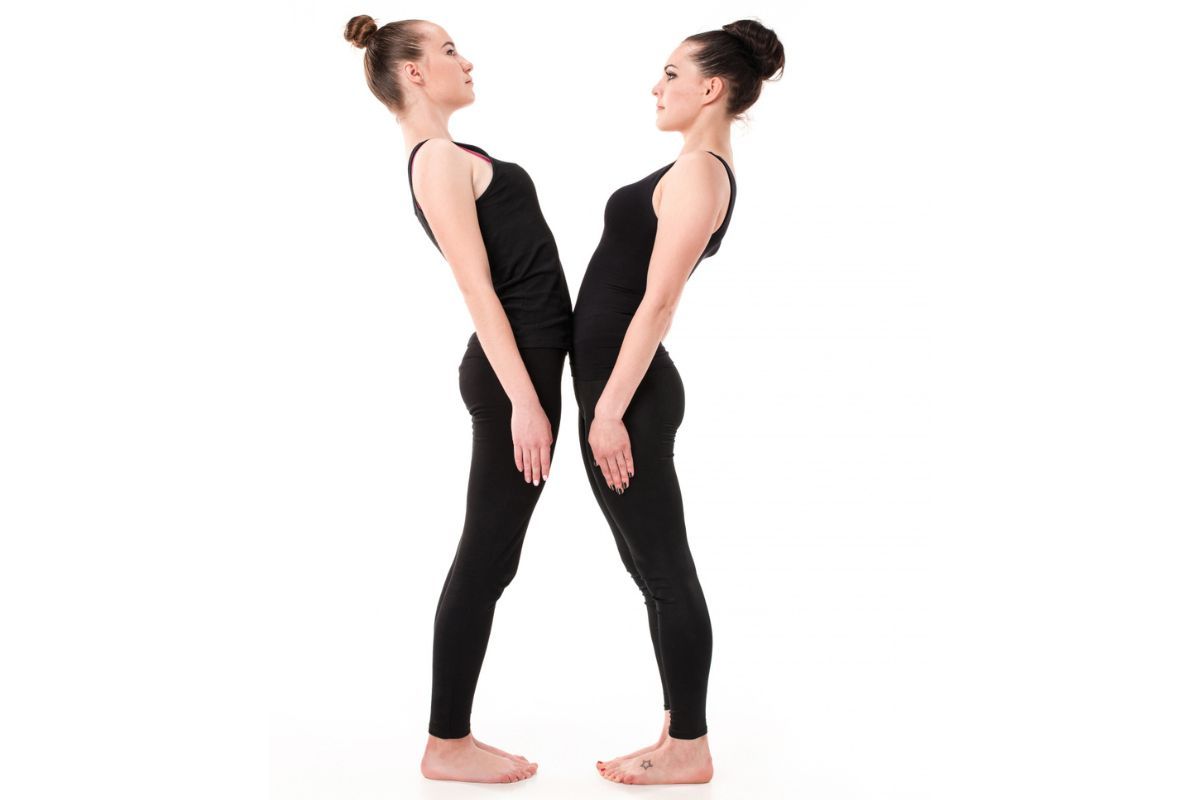
Source: master1305 on Freepik
1. Partner Mountain Pose (Tadasana Variation)
A grounding, upright stance that helps both yogis align posture and synchronize breathing.
How to practice:
- Stand facing each other, feet about hip-width apart.
- Place your palms together at chest level or hold each other’s forearms.
- Close your eyes (optional) and take a few deep, mindful breaths, feeling your alignment from head to toe.
Benefits:
- Reinforces proper posture and gentle core engagement.
- Helps you tune into each other’s breathing rhythm, establishing an early sense of connection.
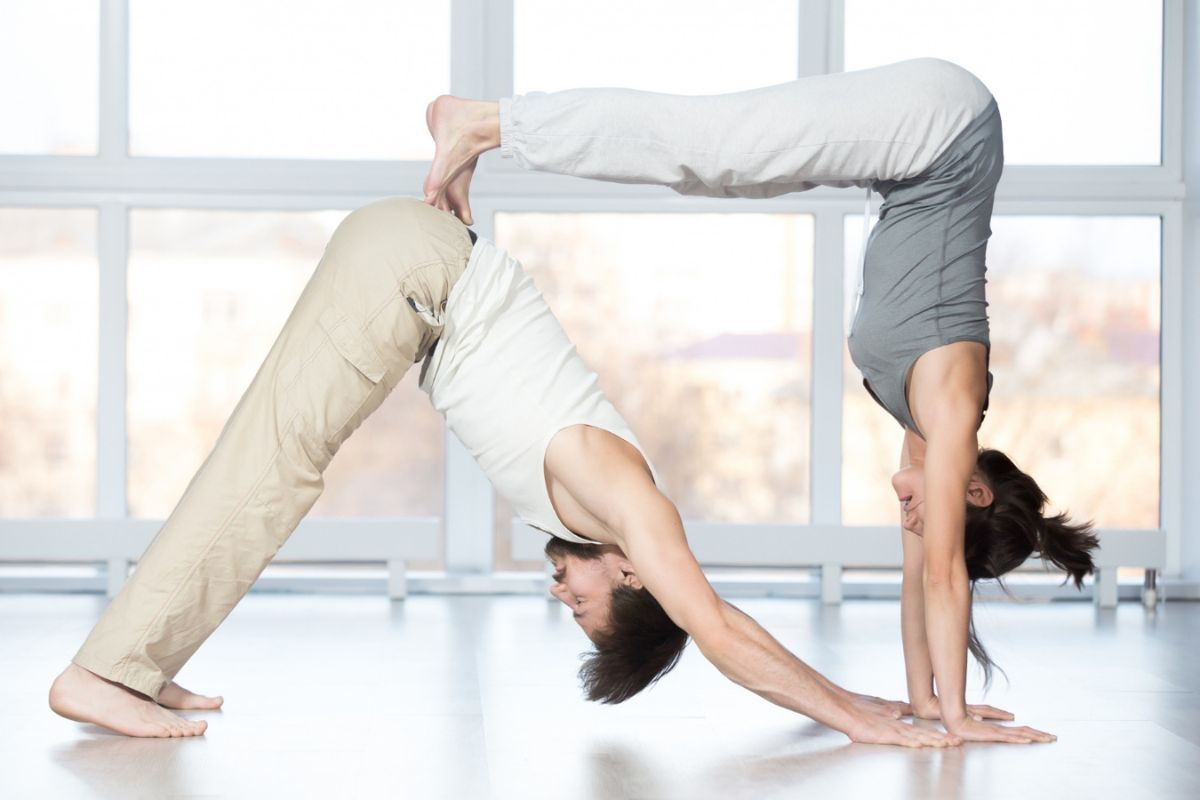
Source: yanalya on Freepik
2. Double Downward-Facing Dog (Adho Mukha Svanasana)
A playful variation of the classic Downward Dog, where one partner forms the base and the other stacks on top.
How to practice:
- Partner 1 moves into a standard Downward Dog, forming an inverted “V.”
- Partner 2 places hands on the ground and carefully steps onto Partner 1’s lower back or hips, also creating a Downward Dog shape.
- Communicate about pressure: Partner 2 should keep their feet light and aligned over the sacrum. After a few breaths, switch roles.
Benefits:
- Deepens the stretch for both participants, especially through the hamstrings and shoulders.
- Encourages balance and clear communication about comfort levels.
Source: yanalya on Freepik
3. Partner Forward Fold
A seated stretch that allows both yogis to gently deepen their hamstring and lower back flexibility.
How to practice:
- Sit facing each other, legs extended, with your feet lightly touching.
- Hold each other’s wrists or hands.
- Take turns leaning back slowly, allowing your partner to fold forward while maintaining a gentle pull.
Benefits:
- Promotes relaxation in the lower back.
- Lets you control the intensity of the stretch through partnered support.

Source: diana.grytsku on Freepik
4. Seated Spinal Twist
A back-to-back twisting posture that releases tension along the spine and encourages mindful breathing.
How to practice:
- Sit back-to-back, with legs crossed or extended comfortably.
- Reach one hand across your body, placing it on your own knee, and the other hand on your partner’s knee.
- Inhale to elongate the spine, then exhale to rotate, gently pressing your backs against each other.
Benefits:
- Enhances spinal mobility and eases minor stiffness.
- Fosters a calm, introspective atmosphere when combined with steady breathing.
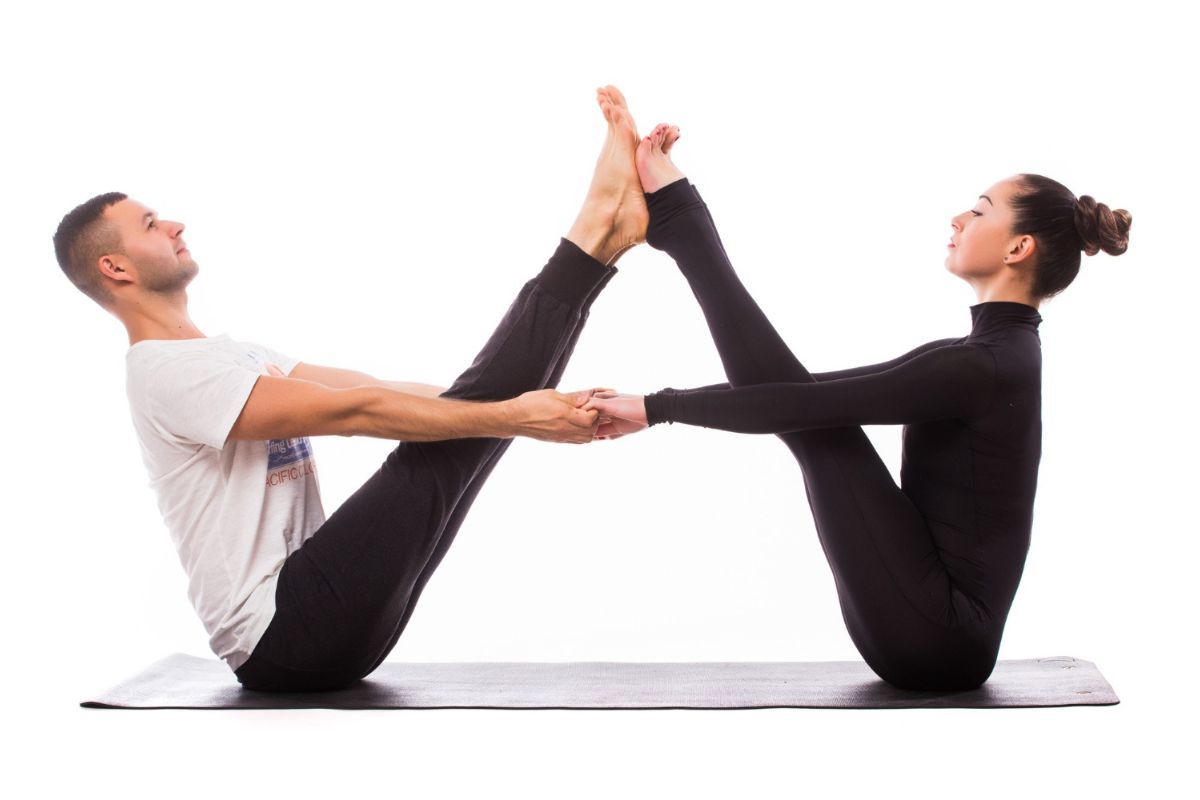
Source: diana.grytsku on Freepik
5. Double Boat Pose (Navasana)
An engaging core exercise performed face-to-face, using mutual stability to maintain balance.
How to practice:
- Sit opposite each other, knees bent, toes touching.
- Hold hands and lift your feet off the floor, pressing the soles of your feet together.
- Straighten your legs into a V-shape if possible, keeping your spine long and chest lifted.
Benefits:
- Strengthens the abdominals, hip flexors, and lower back.
- Trains balance, requiring partners to support each other’s posture.
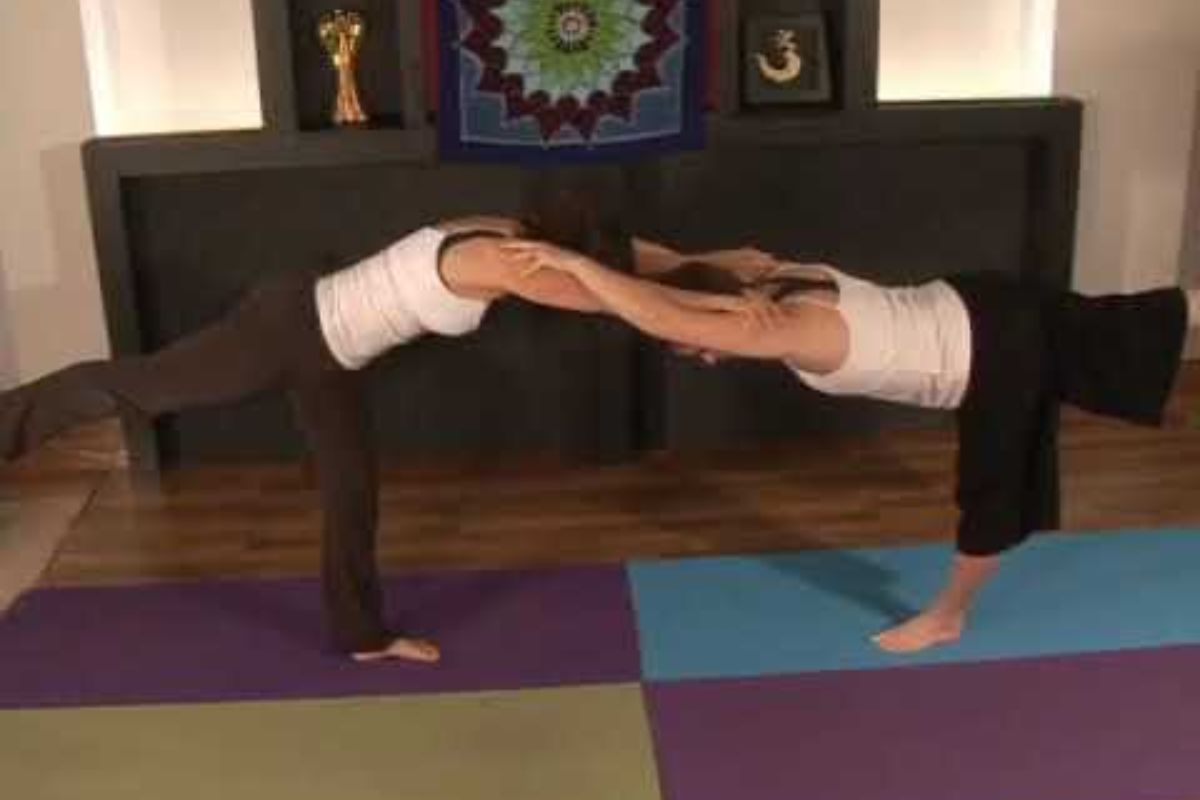
Source: ExpertVillage Leaf Group on YouTube
6. Partner Warrior III (Virabhadrasana III)
A stance challenging leg strength and steadiness, with partners providing counterbalance and motivation.
How to practice:
- Stand a few feet apart, facing each other.
- Extend arms forward and clasp your partner’s forearms or hands.
- Shift onto one leg, lifting the other leg behind you until your torso, arms, and lifted leg form a straight line. Switch sides after several breaths.
Benefits:
- Bolsters leg muscles and core stability.
- Improves concentration and body control through precise alignment.
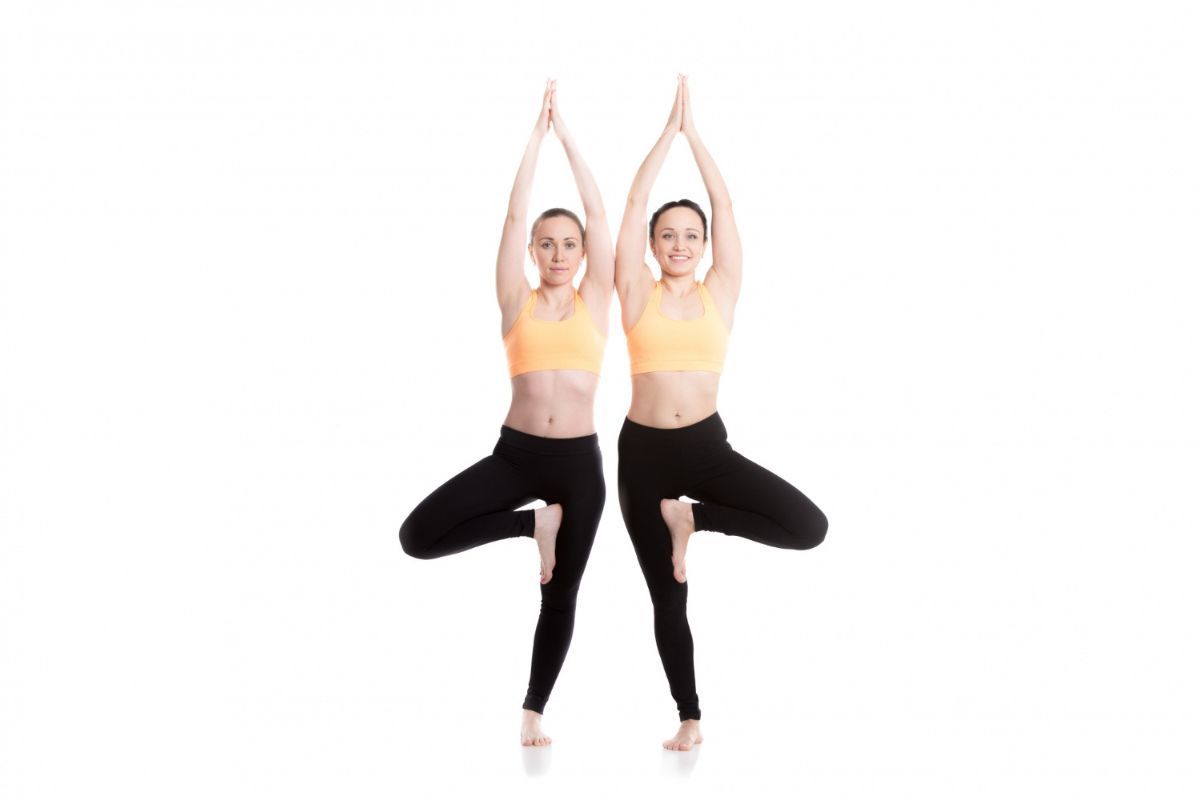
Source: yanalya on Freepik
7. Double Tree Pose (Vrksasana)
A dual version of a classic balancing pose, where partners stand side by side for added support.
How to practice:
- Stand with inside arms around each other’s waist for stability.
- Lift your outer foot and rest it against your calf or inner thigh (not on the knee).
- Bring your free hand to your heart center or raise it overhead, creating a mirrored balance.
Benefits:
- Strengthens the stabilizing muscles of the standing leg.
- Sharpens mental focus and helps maintain equilibrium.

Source: diana.grytsku on Freepik
8. Partner Bridge Pose (Setu Bandha Sarvangasana)
A supportive backbend that activates the glutes, opens the chest, and connects both yogis through shared alignment.
How to practice:
- Lie on your backs with knees bent, feet flat, positioned so that they lightly touch your partner’s feet.
- Press into your feet and lift your hips, forming a solid bridge.
- Optionally, hold hands under your lower backs for extra support, or keep arms by your sides.
Benefits:
- Strengthens the back, legs, and core.
- Improves spinal flexibility and posture, while fostering closeness through synchronized movement.
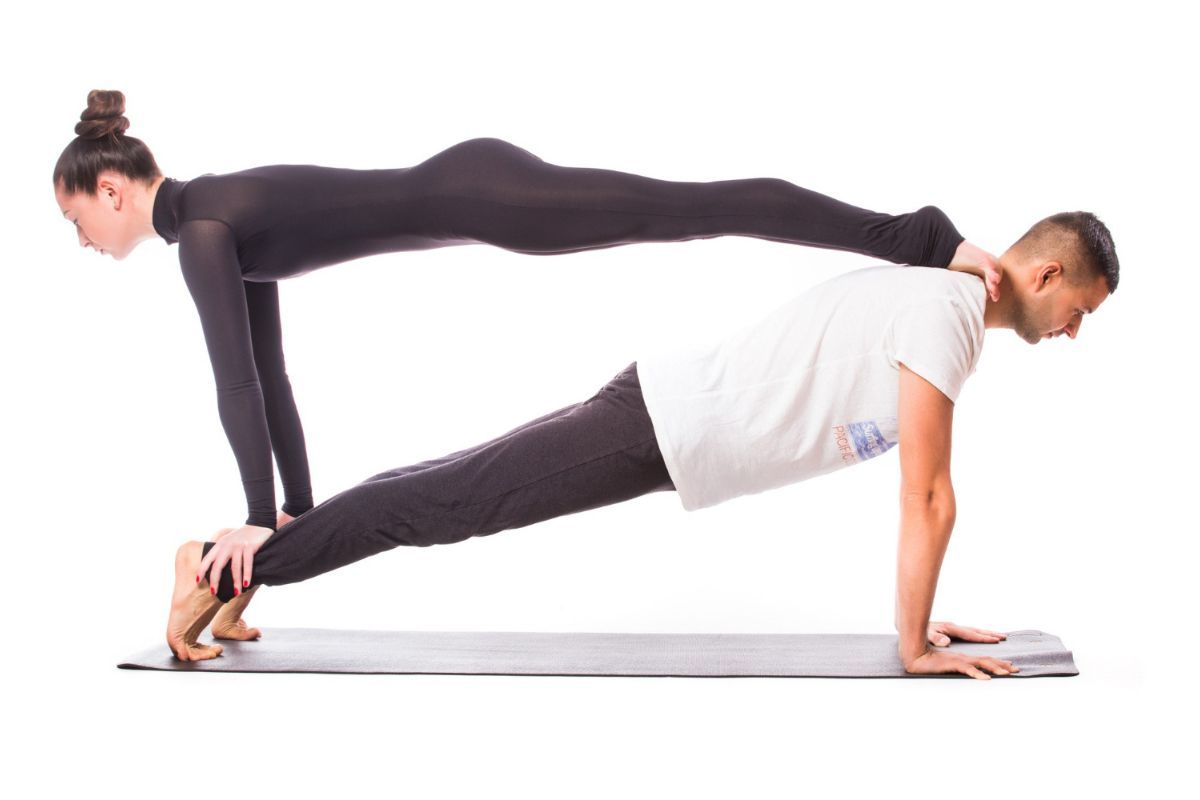
Source: diana.grytsku on Freepik
9. Double Plank Pose
A core-strengthening challenge where one partner forms a plank on top of the other’s plank, emphasizing stability and trust.
How to practice:
- Partner 1 holds a high plank, aligning wrists under shoulders and keeping the body straight.
- Partner 2 places hands on Partner 1’s ankles or lower legs and steps onto their back, forming a second plank.
- Keep weight centered and communicate to adjust balance as needed.
Benefits:
- Targets the arms, shoulders, and core for both partners.
- Reinforces balance, body control, and mutual support.
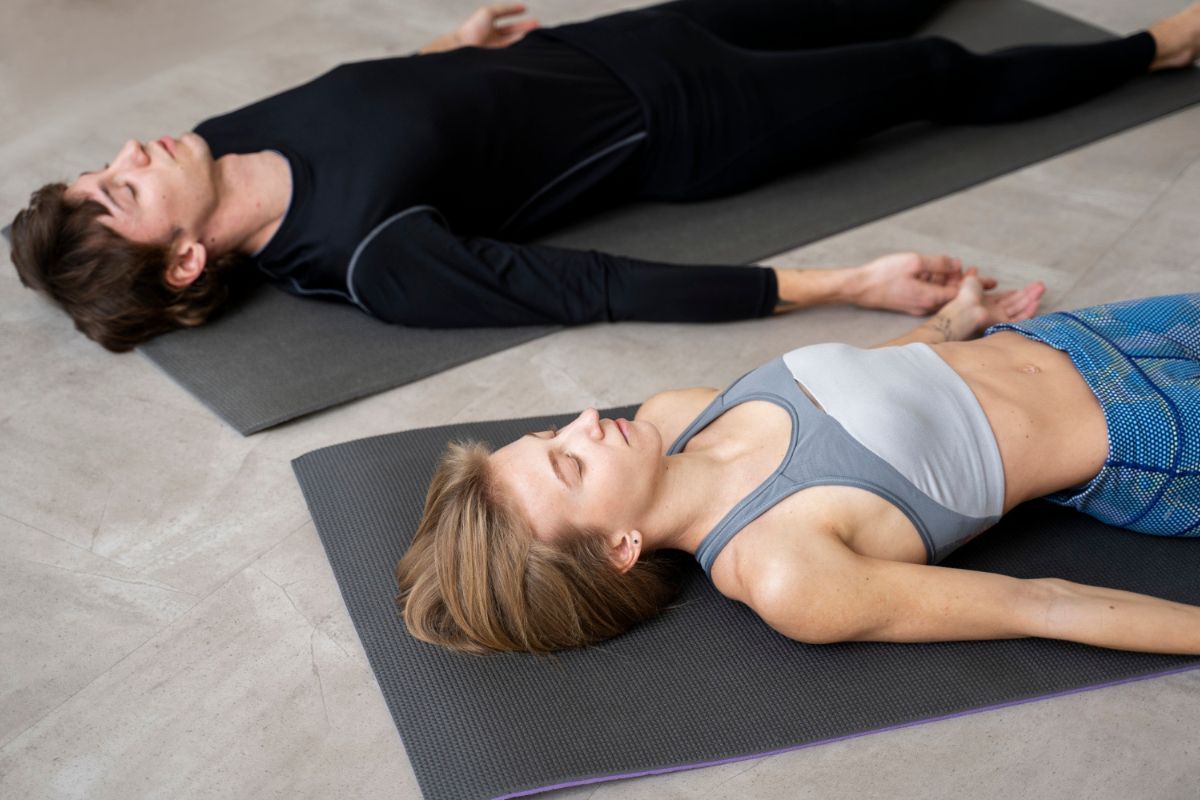
Source: Freepik
10. Partner Savasana (Relaxation Pose)
A soothing end to your session, allowing both individuals to unwind side by side.
How to practice:
- Lie on your backs next to each other or slightly touching shoulders.
- Close your eyes, relax the arms and legs, and focus on deep, rhythmic breathing.
- Let go of tension, remaining in a calm, restorative state for a few minutes.
Benefits:
- Promotes deep relaxation and stress relief.
- Helps you and your partner mentally and physically transition out of the practice.
Conclusion
Let’s be real—partner yoga isn’t just about stretching and balance (although those are great perks). It’s about connection, trust, and shared experiences. Whether you’re practicing with your best friend, your significant other, or even a yoga buddy from class, moving through these poses together builds strength, coordination, and, most importantly, a whole lot of fun!
By now, you’ve probably realized that yoga isn’t just a solo journey. With the right partner, it becomes a collaboration—one where you support each other, laugh through the wobbles, and celebrate the victories together (even if that victory is just not falling over).
What’s next?
- Grab your yoga buddy and try these poses today—no experience required!
- Make it a challenge! Set a goal to master a new partner pose each week.
- Want to take it further? Join a partner yoga class or explore acro yoga for even more advanced moves.
At the end of the day, partner yoga is about having fun and growing together—so roll out those mats, sync up your breathing, and enjoy the journey. Who knows? You might just find that your best yoga sessions are the ones you share. Happy stretching!
Friska 🐨
Read next: Yoga for constipation: 5 poses for relief
